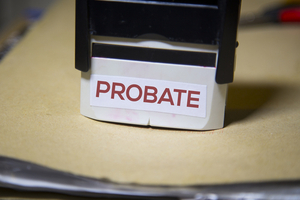Nevada Law Helps Shelter Wealth
A recent Bloomberg.com article noted that some of the nation’s wealthiest families are renting addresses in South Dakota. Why? So they can shelter wealth from the Federal Government by limiting or avoiding the Federal Estate Tax and the Federal Generation Skipping Transfer Tax (the “GSTT”).
The GSTT is another federal tax imposed on wealth transfers that is imposed in addition to the Federal Estate Tax and can be levied at each generation level. Luckily, you can limit or avoid paying these taxes by establishing your Trust in Nevada. Using Nevada as your Trust’s jurisdiction can be better than South Dakota because Nevada law allows for the creation of a completed gift, self-settled spendthrift trust (the “NVSSST”), which provides better protections than South Dakota trusts receive.
Once you have started the process of sheltering your wealth by creating a NVSSST, the next step is making sure Nevada law controls your Trust so you will achieve maximum tax benefits. As a Nevada resident, Nevada law will control. If you move to another state and still want to take advantage of Nevada’s tax-friendly trust laws, you will have to maintain a legal nexus with Nevada. You can do this by renting an address in Nevada and continuing a few key administrative tasks in State, such as having a Nevada Trustee handle paperwork and file tax returns.
You may have heard that President Obama has called for closing this dynasty trust “loophole” (the NVSSST is a dynasty trust) in his annual budget proposals. Despite the President’s call for action, Congress appears disinterested in making changes to your ability to shelter wealth through these trusts. Presumably, Congress sees no reason to act since imposing taxes on these trusts will not actually generate any federal revenue for almost 90 years—roughly the course of 3 generations from grandparent to grandchild, when a taxable distribution is expected on assets that are not sheltered from the GSTT.
This is good news for anyone who has established a NVSSST since the longer Congress procrastinates, the longer assets can remain in these “perpetually” tax-exempt trusts, growing larger over time. An example of the financial benefit used by Bloomberg.com shows that $1 million invested in a dynasty trust such as the NVSSST earning twelve percent a year would swell to $1.9 billion (yes BILLION) over ninety years. By comparison, if the investment were subject to state income tax, federal estate tax, and the GSTT, the investment would only be worth $488 million (one-fourth of the $1.9 billion) over that time.
As stated by many, “we have a tax haven in our midst” in Nevada. If you are using a NVSSST to protect your wealth, I applaud you for embracing creative and effective legal ways to reduce your taxes. If we can assist you in securing your wealth in this manner, please give me a call to discuss the options.





